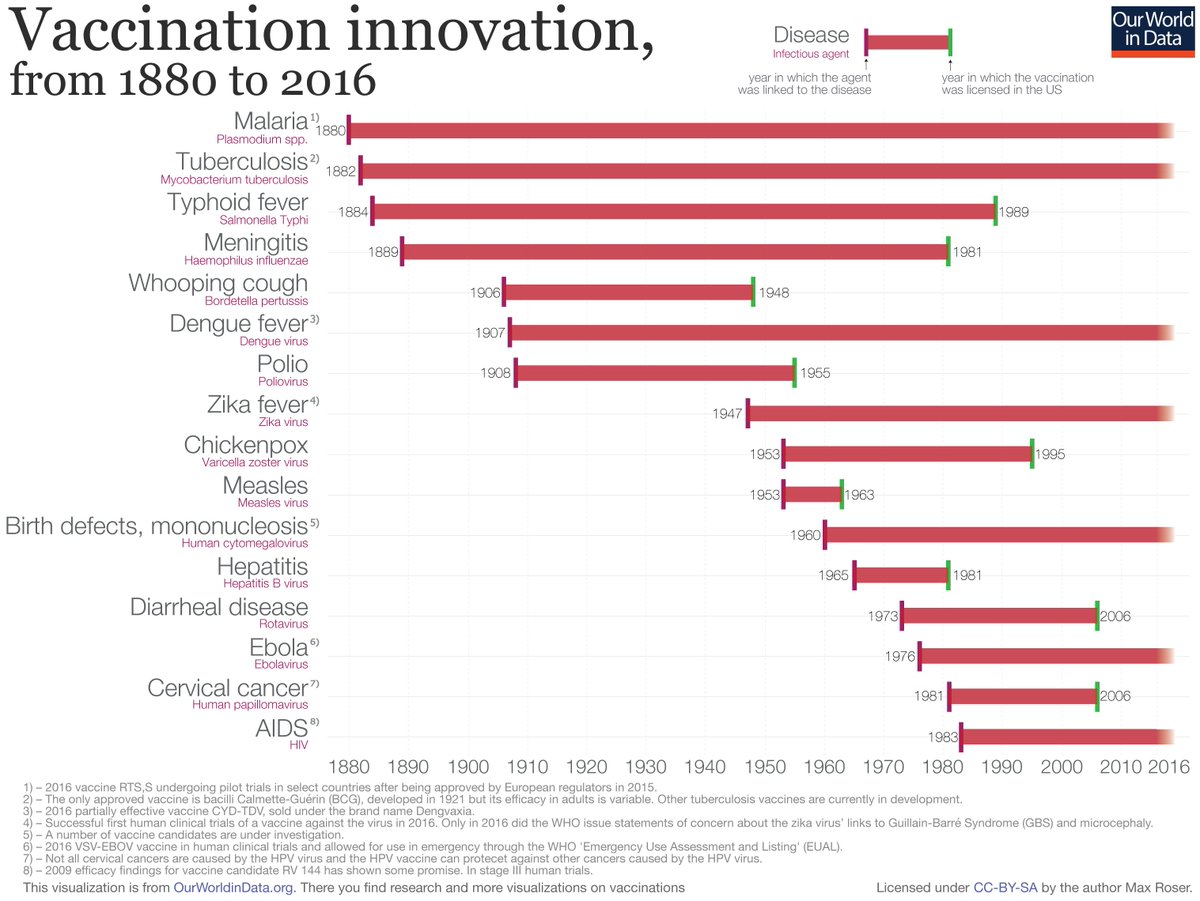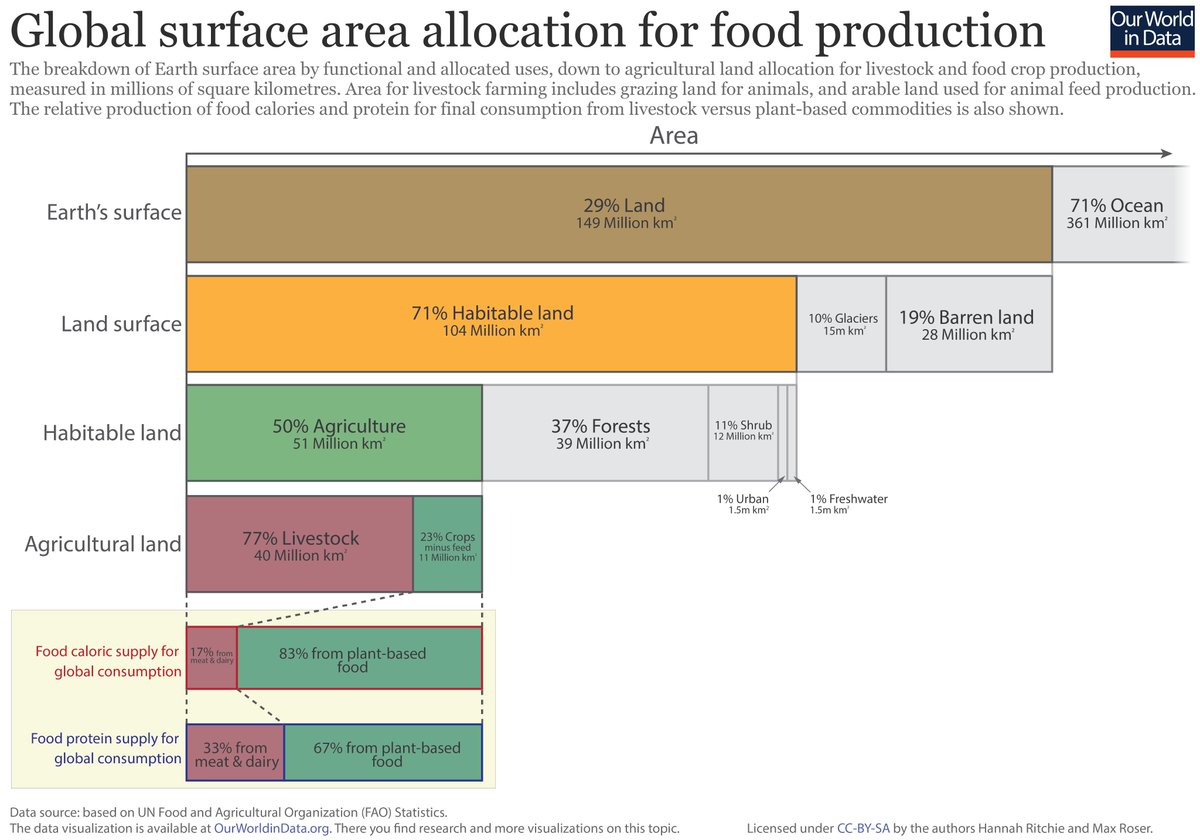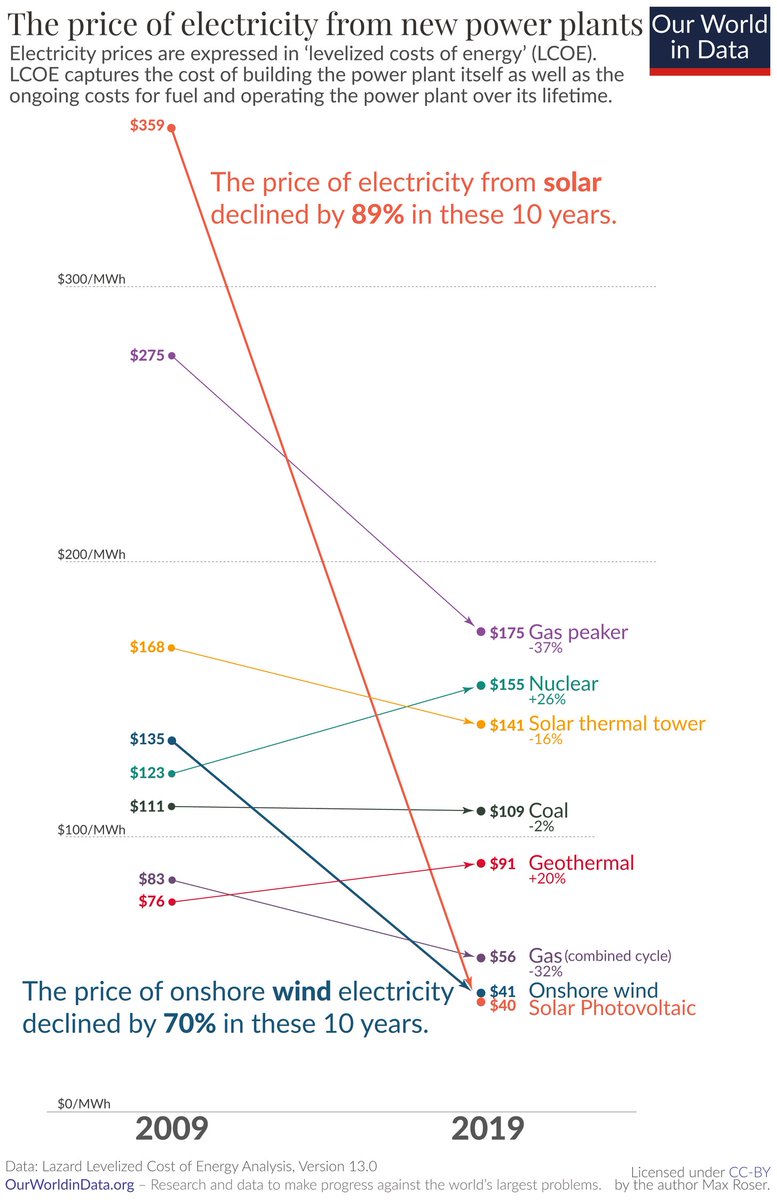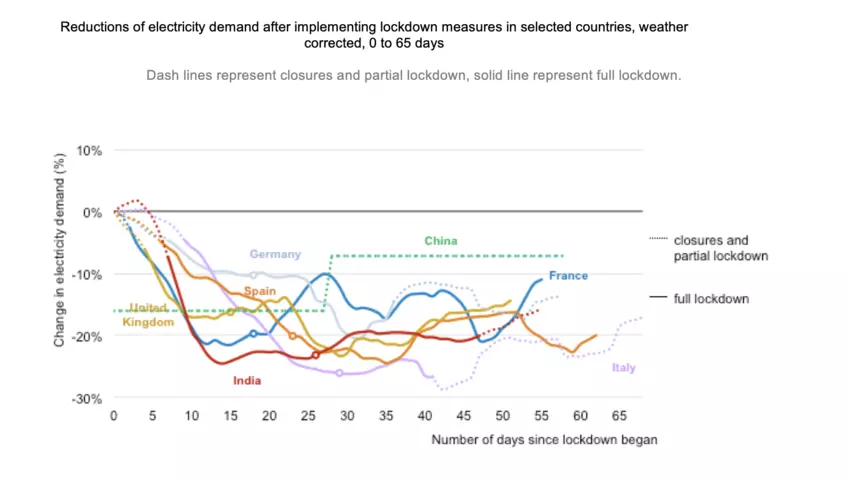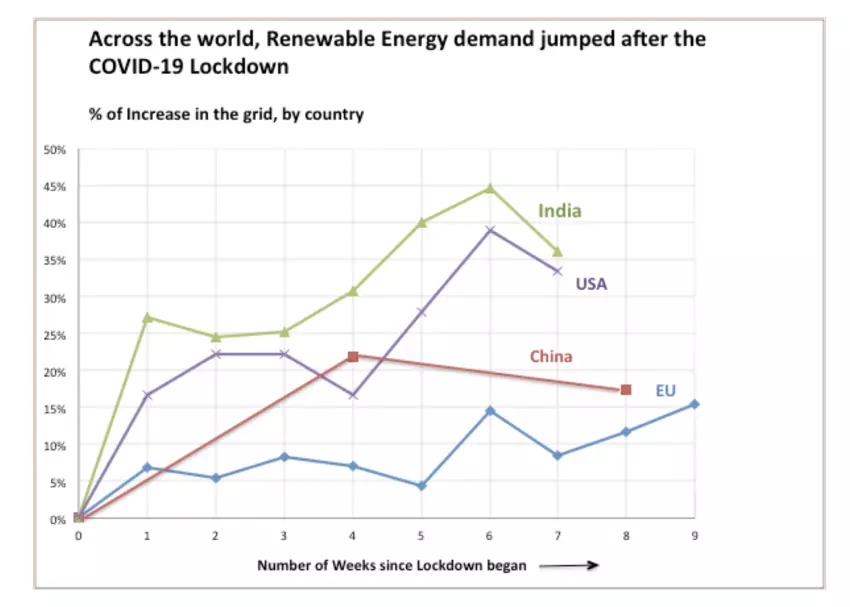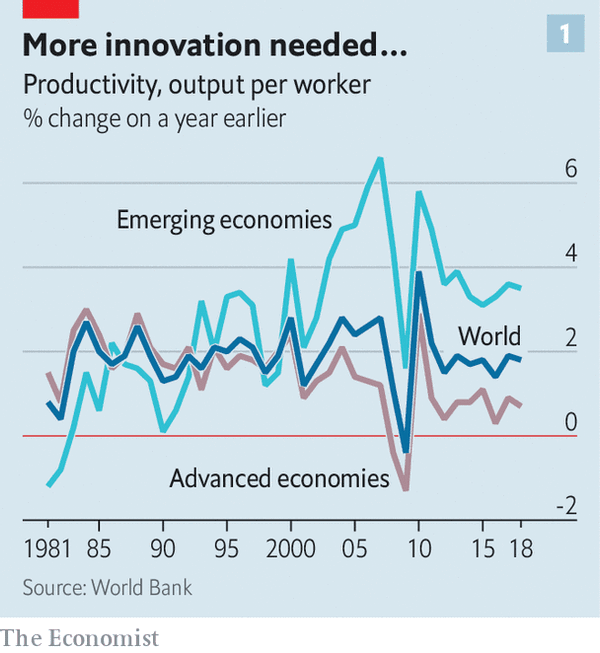2020 has been a hard year and most would be happy to see the back of it.
It was also a year that allowed humans to make a generational leap in breakthrough technologies.
A thread (1/n)
It was also a year that allowed humans to make a generational leap in breakthrough technologies.
A thread (1/n)
First, the biggest winner of 2020 - vaccines.
Vaccines have collectively done more to advance the cause of human health than most other interventions. But they are time-consuming and costly to produce. The process from end to end could take up to 15 years.
Why?
Vaccines have collectively done more to advance the cause of human health than most other interventions. But they are time-consuming and costly to produce. The process from end to end could take up to 15 years.
Why?
The traditional vaccine required mass production of viruses which are then weakened or from which critical proteins are extracted to develop the vaccine. This process takes time.
mRNA was a game-changer
Why?
mRNA was a game-changer
Why?
mRNA vaccines work on a simple premise. What if you could decode the structure of the virus to identify the critical protein that can be directly mass-produced separate from the virus itself
There was 30 years of research on the SARS virus. When the SARS-COV2 virus hit, advances in genome sequencing technology allowed scientists in China to decode the structure of this virus within weeks.
Within weeks, scientists had produced enough vaccines to test on animals
Within weeks, scientists had produced enough vaccines to test on animals
In <11 months, the vaccines are ready for human use.
It is awe-inspiring if you consider that the record for the fastest vaccine before this was for mumps, which took 4 years!
Armed with advances in mRNA, vaccines are being tested for zika, ebola and even cancer!
It is awe-inspiring if you consider that the record for the fastest vaccine before this was for mumps, which took 4 years!
Armed with advances in mRNA, vaccines are being tested for zika, ebola and even cancer!
Second, plant protein
The value chain of cattle ranges from inputs (feed) to production (breeding) to processing (culling), to packing and distribution. All this so that our bodies can get protein molecule. The cost of it is staggering.
The value chain of cattle ranges from inputs (feed) to production (breeding) to processing (culling), to packing and distribution. All this so that our bodies can get protein molecule. The cost of it is staggering.
50% of all habitable land is used for agri. 77% of that is used for rearing cattle and livestock which contributes little to global calorie intake.
The 11 mn sq km used for crops supply more calories and protein than the almost four-times larger area used for livestock
The 11 mn sq km used for crops supply more calories and protein than the almost four-times larger area used for livestock
Then the outsized GHG emissions. Consider that 11% of Australia's all GHG emissions are from direct livestock.
COVID turned meat processing facilities into hotspots and the demand fell from consumers due to health concerns
COVID turned meat processing facilities into hotspots and the demand fell from consumers due to health concerns
Plant protein industry came to the forefront.
Beyond Meat and Impossible have been the torchbearers but startups globally attracted heavy investor interest. Plant protein products are being localized for palettes globally (Dominoes introduced a plant protein pizza in India!)
Beyond Meat and Impossible have been the torchbearers but startups globally attracted heavy investor interest. Plant protein products are being localized for palettes globally (Dominoes introduced a plant protein pizza in India!)
Cows have historically been disrupted. Their utility is now mostly meat and milk.
The investment and progress in 2020 will go some in way in creating a dent in those too
https://evolvingeconomy.substack.com/p/the-endgame-for-meat
The investment and progress in 2020 will go some in way in creating a dent in those too
https://evolvingeconomy.substack.com/p/the-endgame-for-meat
Third, Clean energy
50%+ of GHG emissions are from electricity and transport.
Price of producing electricity from solar and wind has fallen by 89% and 71% in the last decade.
It is now the cleanest AND the cheapest source of energy.
50%+ of GHG emissions are from electricity and transport.
Price of producing electricity from solar and wind has fallen by 89% and 71% in the last decade.
It is now the cleanest AND the cheapest source of energy.
Due to COVID induced shutdowns, the demand for electricity collapsed.
The grid operators turned to the cheapest form of energy to balance the grid. The share of renewables increased rapidly as a result. In <10 weeks, India increased its renewable energy consumption by ~45%
The grid operators turned to the cheapest form of energy to balance the grid. The share of renewables increased rapidly as a result. In <10 weeks, India increased its renewable energy consumption by ~45%
All of this happened when the prices of fossil fuels were at historic lows. In the USA, the share of renewables consumption crossed coal for the first time in 130 years.
The economics of renewables passed their most strenuous test https://www.weforum.org/agenda/2020/06/covid-19-is-a-game-changer-for-renewable-energy/
The economics of renewables passed their most strenuous test https://www.weforum.org/agenda/2020/06/covid-19-is-a-game-changer-for-renewable-energy/
Price of lithium-ion batteries have declined faster than predicted.
While the share price of TSLA was covered, the mundane mattered. Consumer EVs deliver a range of 400+ km. Electric trucks are being built, govts rolled out more progressive policies https://twitter.com/JamesTFrith/status/1313031970285408262?s=20
While the share price of TSLA was covered, the mundane mattered. Consumer EVs deliver a range of 400+ km. Electric trucks are being built, govts rolled out more progressive policies https://twitter.com/JamesTFrith/status/1313031970285408262?s=20
Compact nuclear fusion reactor (which mimics the way the Sun produced energy and is the holy grail in energy technology) was very likely to work according to scientists https://www.nytimes.com/2020/09/29/climate/nuclear-fusion-reactor.html?action=click&module=News&pgtype=Homepage
Fourth, productivity.
There have been competing schools of thought on what has caused the stagnation in productivity over the last decade. Some believed that it is because, for all the tech enthusiasm, the recent inventions were simply not as transformative
There have been competing schools of thought on what has caused the stagnation in productivity over the last decade. Some believed that it is because, for all the tech enthusiasm, the recent inventions were simply not as transformative
The productivity J curve formulated by researchers in MIT and UChicago posits that it takes time to work out how to use new technologies effectively. E.g. AI like electricity is a general-purpose technology, but it takes time & experiments to deploy them for their best use case
Years of invt in cloud technology and video conferencing platforms paid off handsome dividends as large portions of life and work moved online.
Industries after industries adapted to a new way of business & labor productivity actually rose in 2020!
https://www.bls.gov/news.release/pdf/prod2.pdf
Industries after industries adapted to a new way of business & labor productivity actually rose in 2020!
https://www.bls.gov/news.release/pdf/prod2.pdf
Why does it matter? 1. Increasing productivity is the surest way to increase income levels. 2. The comfort (with variances) in adopting new tech bodes well for many areas of emerging tech like AR, VR, AVs, Telehealth. We may be on the cusp of a sustained rise in productivity
One thing that is true across all the progress is that almost all of it was a slow burn. It was years of incremental progress that all came together.
2020 though bleak was the year, a lot of things came together in ways unimagined and a lot of groundwork was laid
2020 though bleak was the year, a lot of things came together in ways unimagined and a lot of groundwork was laid
As @tylercowen argues and I agree - the world got better and worse in 2020.
In a bleak year, we made progress, and science-inspired a sense of awe.
2020 taught me resilience, patience, & to be thankful for what I have. Looking forward to 2021! (n/n) https://www.bloomberg.com/opinion/articles/2020-10-05/how-much-worse-can-things-get-that-question-may-be-a-good-sign?sref=ptBDLfpB
In a bleak year, we made progress, and science-inspired a sense of awe.
2020 taught me resilience, patience, & to be thankful for what I have. Looking forward to 2021! (n/n) https://www.bloomberg.com/opinion/articles/2020-10-05/how-much-worse-can-things-get-that-question-may-be-a-good-sign?sref=ptBDLfpB

 Read on Twitter
Read on Twitter